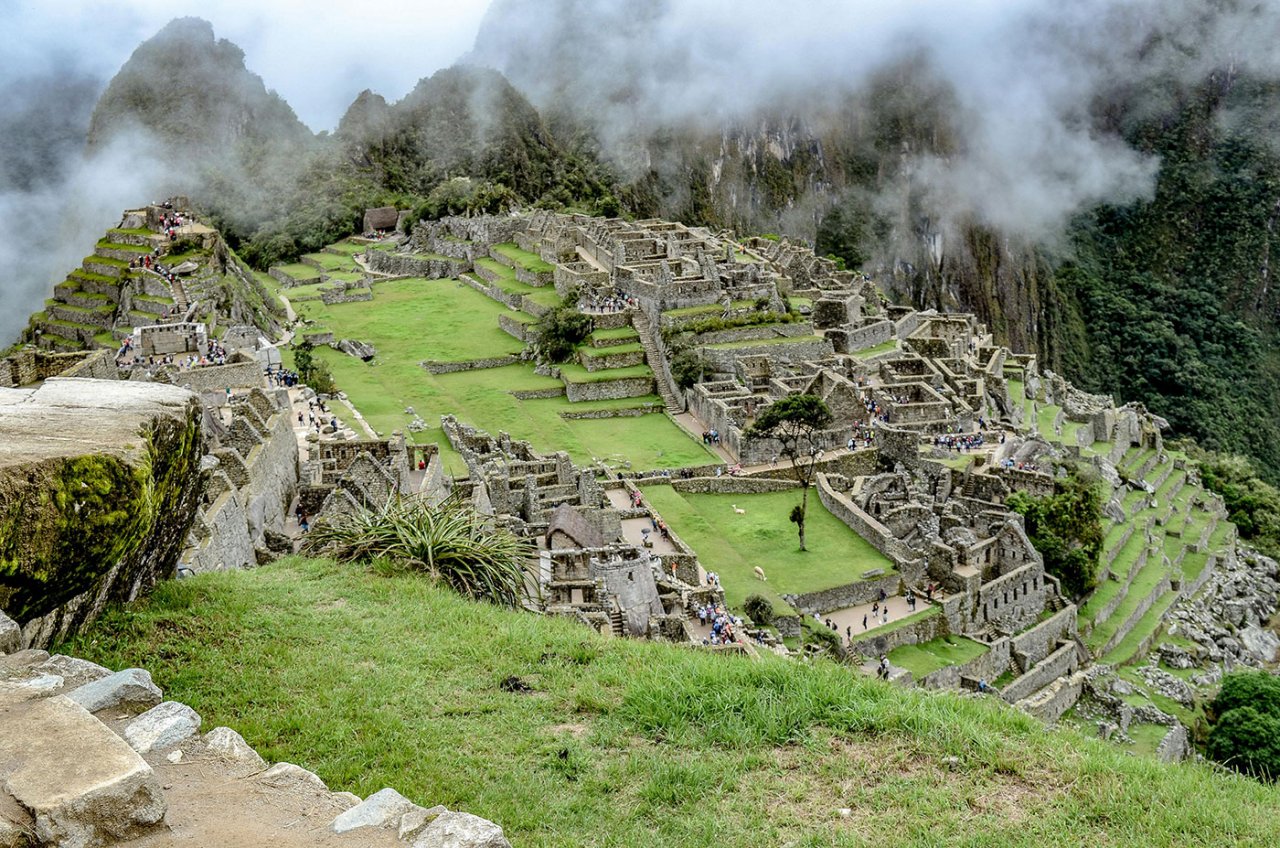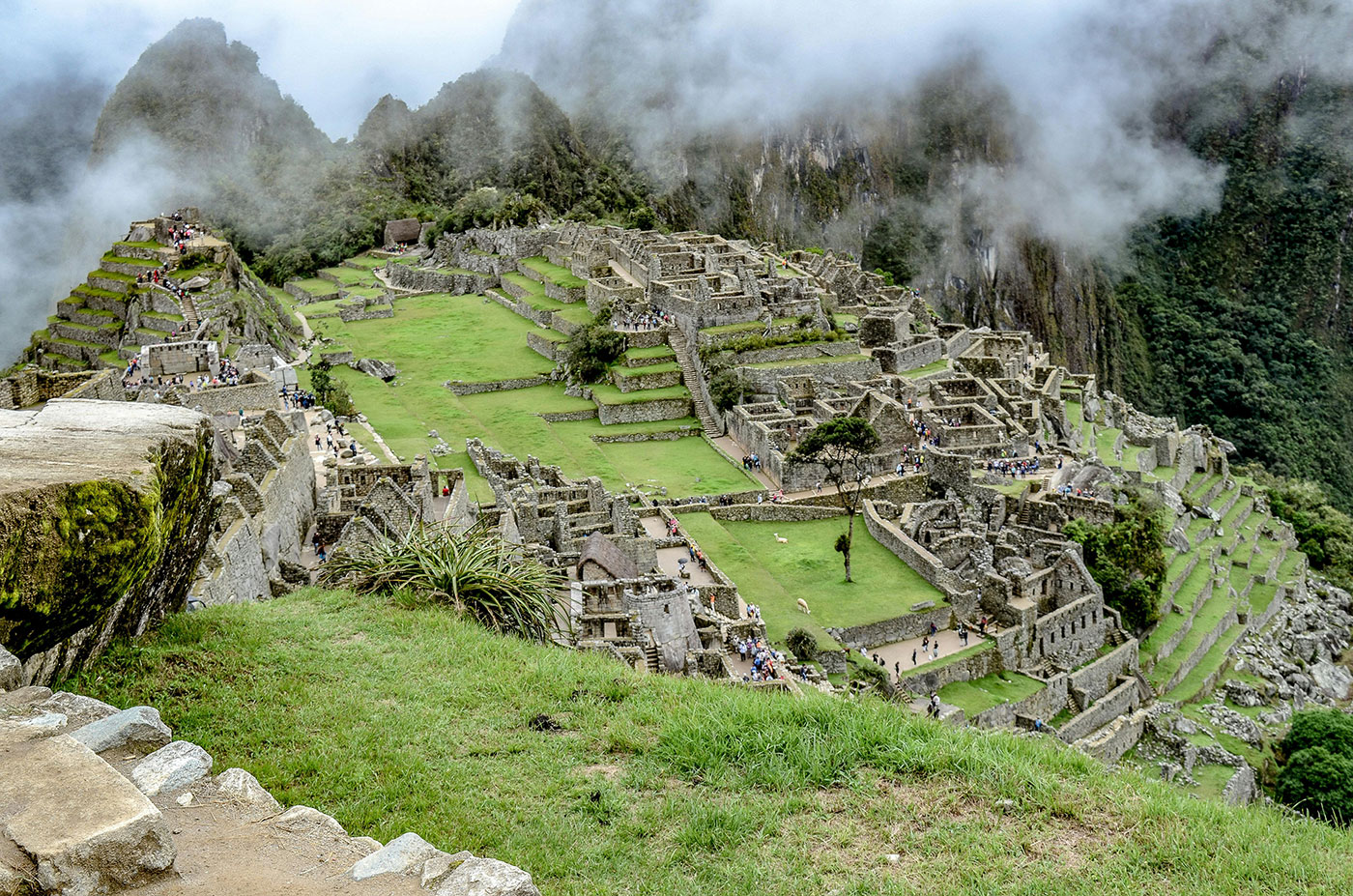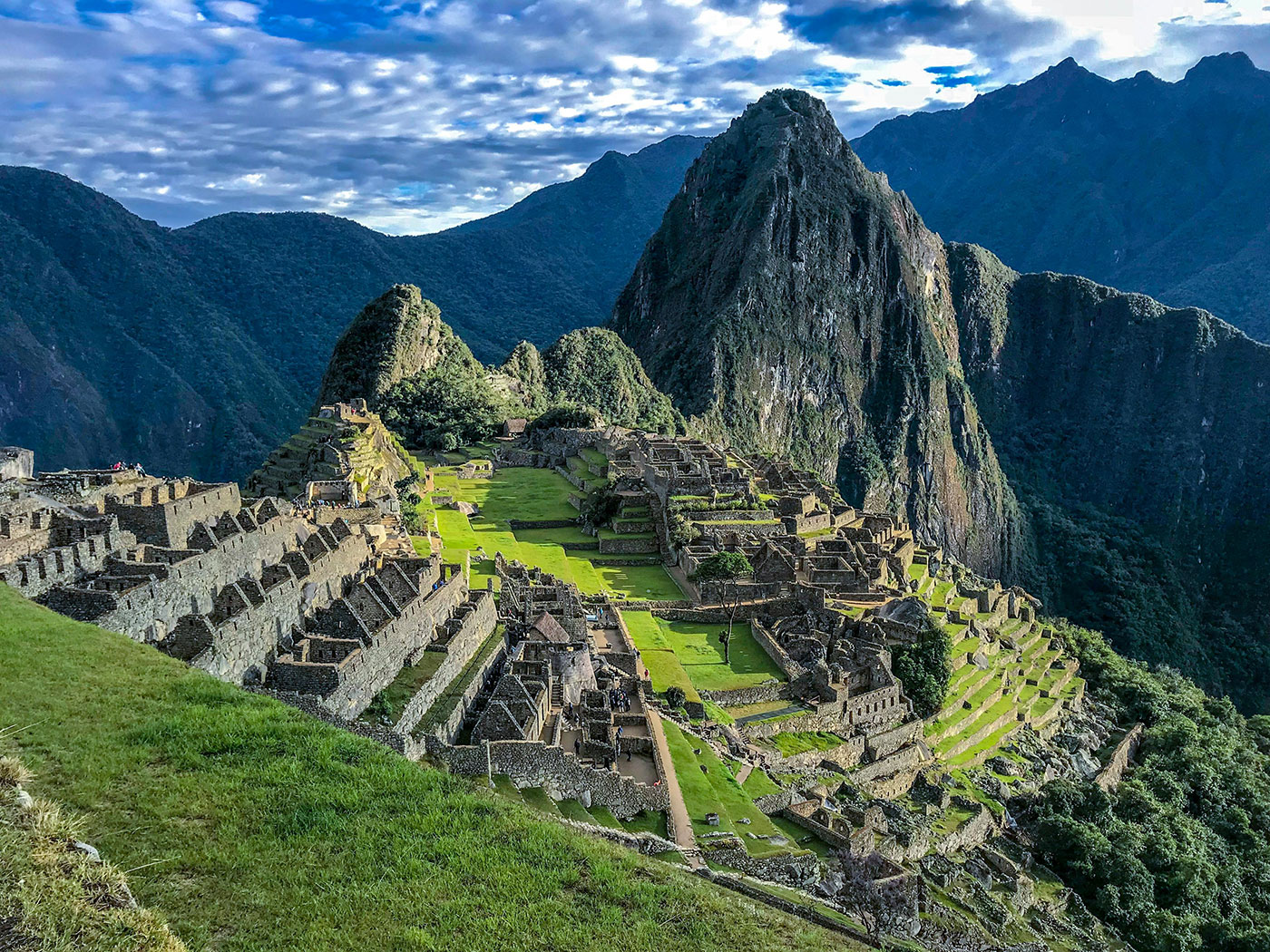Revealing the Magic: Architectural Rendering and the World of Inca Architecture

Arqsix
April 23rd, 2024

Introduction: The Wonders of Inca Architecture
Step into a world where time stands still, where the whispers of ancient civilizations echo through the ages, and where every stone bears witness to the triumphs and tribulations of a bygone era. Welcome to the realm of Inca architecture—a captivating tapestry woven from the threads of history, culture, and ingenuity. Nestled amidst the rugged beauty of the Andes Mountains, the Inca Empire once reigned supreme, leaving behind a legacy that continues to inspire awe and admiration to this day.
From the legendary citadel of Machu Picchu to the sprawling complex of Sacsayhuamán, Inca buildings stand as monuments to the ingenuity and vision of a civilization that thrived amidst the challenges of its natural environment. With Arqsix's expertise in photorealistic rendering, architects and designers can peel back the layers of history, revealing the intricate details and majestic beauty of Inca architecture with stunning clarity. Join us as we delve into the marvels of Inca architecture, exploring its rich history, its enduring legacy, and its profound impact on the world of design.
 Photo by logan primm
Photo by logan primm
Exploring the Marvels: The Legacy of Inca Architecture
A Civilization Carved in Stone
Inca architecture stands as a testament to the remarkable achievements of one of the world's most enigmatic civilizations. Nestled amidst the towering peaks of the Andes Mountains, the Inca Empire flourished for centuries, leaving behind a legacy that continues to captivate the imagination of historians, architects, and travelers alike. At the heart of this legacy lies the artistry and ingenuity of Inca builders, who crafted structures of unparalleled beauty and sophistication using little more than stone, wood, and their boundless creativity.
The Inca civilization emerged in the early 15th century and quickly rose to prominence, establishing one of the largest and most advanced empires in pre-Columbian America. What sets Inca architecture apart is its seamless integration with the natural environment—a reflection of the Inca people's deep reverence for the world around them. Inca builders carefully selected sites for their cities and monuments, often choosing locations with strategic advantages such as natural defensive barriers or access to fertile land for agriculture. This harmonious relationship between man and nature is evident in every aspect of Inca architecture, from the layout of cities to the design of individual buildings.
The hallmark of Inca architecture is its use of finely cut stone blocks, which were meticulously fitted together without the use of mortar. This precision craftsmanship allowed Inca builders to create structures of astonishing beauty and durability, many of which still stand today as testaments to their skill and ingenuity. From the grand plazas of Cusco to the intricately carved temples of the Sacred Valley, Inca architecture reflects not only the technical prowess of its creators but also their deep spiritual and cultural beliefs. As we delve deeper into the legacy of Inca architecture, we uncover not just a series of impressive buildings, but a window into the soul of a civilization that flourished amidst the rugged beauty of the Andes Mountains.
Machu Picchu: The Jewel of the Andes
No discussion of Inca architecture would be complete without mentioning Machu Picchu, the crown jewel of the Inca Empire. Perched atop a mountain ridge overlooking the Sacred Valley, Machu Picchu is a marvel of engineering and design—a city built without mortar, using only precisely cut stone blocks that fit together like pieces of a puzzle. From its breathtaking terraces to its intricate irrigation system, Machu Picchu is a testament to the skill and vision of Inca architects, who were able to harmonize human ingenuity with the natural landscape in a way that still astounds visitors today.
Machu Picchu was built in the 15th century during the height of the Inca Empire and served as a royal estate for the Inca emperor Pachacuti. Despite its remote location and the challenges of its mountainous terrain, Machu Picchu boasts an impressive array of architectural features, including temples, palaces, and residential areas. The city was carefully planned and constructed to take advantage of its natural surroundings, with buildings positioned to align with the movements of the sun and stars, and terraces built to maximize agricultural productivity.
Today, Machu Picchu remains one of the most iconic and visited archaeological sites in the world, drawing millions of tourists each year to marvel at its beauty and mystery. The site was declared a UNESCO World Heritage Site in 1983, recognizing its cultural significance and the need to preserve it for future generations. As visitors wander through the ancient streets of Machu Picchu, they are transported back in time to a world where the Inca Empire reigned supreme, and the wonders of Inca architecture stood as testaments to the ingenuity and vision of a remarkable civilization.
 Photo by Chelsea Cook
Photo by Chelsea Cook
Fortresses and Temples: Guardians of Inca Civilization
Beyond Machu Picchu, the Inca Empire was dotted with a network of fortresses, temples, and administrative centers, each more awe-inspiring than the last. From the massive stone walls of Sacsayhuamán to the intricate carvings of Ollantaytambo, these structures served as both symbols of Inca power and testaments to their advanced understanding of engineering and architecture. Inca builders were masters of their craft, able to construct buildings that withstood the test of time and the ravages of nature, leaving behind a legacy that continues to inspire wonder and admiration centuries later.
Sacsayhuamán, located on the outskirts of Cusco, is one of the most impressive examples of Inca military architecture. The site features massive stone walls constructed from blocks weighing up to 200 tons, which were carefully cut and fitted together with astonishing precision. These walls served both defensive and ceremonial purposes, protecting the city of Cusco from invaders while also serving as a site for religious rituals and celebrations. Today, Sacsayhuamán remains a popular tourist attraction and a testament to the engineering prowess of the Inca civilization.
Ollantaytambo, situated in the Sacred Valley, is another notable example of Inca architecture, featuring finely crafted stone terraces, temples, and residential areas. The site served as both a ceremonial center and a strategic military stronghold, guarding the entrance to the Sacred Valley and providing a safe haven for Inca leaders and their followers. Ollantaytambo is perhaps best known for its massive stone blocks, some of which weigh over 50 tons and were transported from quarries several miles away—a testament to the incredible skill and determination of Inca builders.
As visitors explore these and other sites of Inca architecture, they are struck not only by the scale and grandeur of the structures but also by the ingenuity and craftsmanship that went into their construction. From the intricate carvings to the massive stone walls, every aspect of Inca architecture reflects the values and beliefs of a civilization that flourished amidst the rugged beauty of the Andes Mountains. As we continue to uncover the secrets of Inca architecture, we gain a deeper appreciation for the achievements of this remarkable civilization and the enduring legacy they have left behind.
The Role of Architectural Rendering
Architectural rendering serves as the bridge between the abstract concepts of imagination and the concrete reality of construction. It is the magic wand that transforms ideas into tangible visualizations, allowing architects, designers, and clients to see the potential of a project before it ever breaks ground. In this pivotal role, architectural rendering plays a crucial part in the design process, offering insights, facilitating communication, and ultimately shaping the final outcome of a project.
Visualization and Conceptualization
At its core, architectural rendering is a tool for visualization and conceptualization. It allows architects and designers to take the seeds of an idea and nurture them into fully formed concepts, exploring different possibilities, experimenting with materials and textures, and refining their vision until it aligns perfectly with their goals and objectives. By providing a visual representation of a project, architectural rendering helps to bridge the gap between abstract ideas and concrete realities, allowing stakeholders to see the potential of a design in a way that words alone cannot convey.
Crafting Authenticity: The Art of Photorealistic Rendering
In the realm of architectural rendering, authenticity is key. With Arqsix's commitment to precision and attention to detail, every rendering is a masterpiece—a faithful recreation of the architectural wonders of the Inca Empire. From the intricate stone foundations to the trapezoidal shapes that define Inca architecture, Arqsix captures the essence of these ancient structures with unparalleled accuracy and realism.
Innovating for Tomorrow: The Future of Architectural Rendering
As we stand on the threshold of a new era, the future of architectural rendering shines brighter than ever before. With Arqsix leading the way, the boundaries of what's possible are continually being pushed, and the possibilities are limitless. From ancient wonders to modern marvels, Arqsix is poised to redefine the way we envision the world around us, one rendering at a time.
 Photo by Bradley Hook
Photo by Bradley Hook
Embracing Immersive Technologies
As we stand on the threshold of a new era, the future of architectural rendering shines brighter than ever before. With advancements in technology and a growing appreciation for the artistry of design, the possibilities for the future of architectural rendering are boundless. In this rapidly evolving landscape, Arqsix emerges as a leader, pushing the boundaries of what's possible and redefining the way we envision the world around us.
One of the most popular pieces of immersive technology is 360 degree imaging. These renders allow potential clients to see plans in a completely different light and they can completely submergre themselves in a given project. "Cello", one of our most recent projects, also uses this technology.
Virtual Reality and Augmented Reality: Redefining Visualization
With the advent of virtual reality (VR) and augmented reality (AR) technologies, architectural rendering has entered a new dimension, offering immersive experiences that allow clients to step inside their designs and explore them from every angle. Arqsix embraces these technologies, harnessing the power of VR and AR to create interactive renderings that bring projects to life in ways never before imagined. From virtual walkthroughs of proposed buildings to augmented reality overlays that blend digital models with the real world, Arqsix is at the forefront of this revolution, shaping the future of architectural visualization one pixel at a time.
Democratizing Design: Accessibility and Inclusivity
But perhaps the most exciting aspect of the future of architectural rendering is its potential to democratize design and empower creators from all walks of life. With the rise of cloud-based rendering platforms and collaborative tools, Arqsix is making architectural rendering more accessible and inclusive than ever before. Whether you're a seasoned architect or a budding designer, Arqsix provides the tools and resources you need to bring your vision to life, offering support and guidance every step of the way. By harnessing the power of technology and innovation, Arqsix is not just shaping the future of architectural rendering—it's shaping the future of design itself.
Accessibility and inclusivity have been becoming more and more needed, as we have seen a 35% increase in demand for this specific aspect.
Conclusion: Embarking on a Journey of Discovery
In the world of architecture and design, the journey from concept to creation is a magical one—a journey filled with creativity, collaboration, and the relentless pursuit of perfection. With Arqsix as your partner, this journey becomes more than just a process—it becomes an adventure, an exploration of the boundless possibilities that await. So why wait? Take the first step towards realizing your vision today and experience the transformative power of architectural rendering with Arqsix.
FAQs
Our location
Ready to share your expertise?
We welcome submissions from talented writers and experts in various fields who are passionate about sharing their knowledge and insights with our audience.
Write for UsArqsix - Shaping Stories, Shaping Spaces
Elevating real estate marketing for a world that’s always evolving.
2025 © Arqsix. All Rights reserved. |Sitemap|Privacy Notice